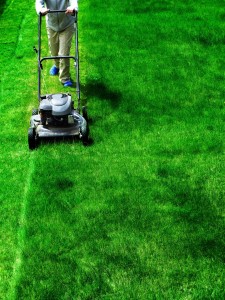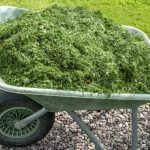 As homeowners, we always want to maintain a healthy-looking lawn, which can extremely time-consuming. During the summertime, your lawn experiences a lot of action, which is why it’s important for it to look its very best. As summer quickly approaches, keeping the grass looking fresh and healthy can be somewhat of a challenge.
As homeowners, we always want to maintain a healthy-looking lawn, which can extremely time-consuming. During the summertime, your lawn experiences a lot of action, which is why it’s important for it to look its very best. As summer quickly approaches, keeping the grass looking fresh and healthy can be somewhat of a challenge.
Summer temperatures will often soar well-over 90 degrees, which can cause damaging droughts. In order to maintain a healthy lawn, you should fertilize, coax, and water it regularly, which will also help encourage new growth.
When it comes to summer fertilization, there are a variety of different factors to take into consideration, such as:
- Climate
- Grass-type
- Fertilizers you choose to use
Depending on where you live, summer weather conditions can vary greatly. You may have mild or severe heat, mixed with light or heavy humidity, or even spells of aridity and drought. Texas summer temperatures may reach 90-110 degrees, which can take its toll on the lawn.
These conditions can make it difficult for new grass to grow in properly. Heat can cause the grass to grow in slower, stiffer, or discolored, which tends to be more common for people who regularly have people over during the summertime. All this excessive wear and tear can leave your lawn looking brown, unhealthy, and brittle. Here are some ways to ensure a healthy looking lawn.
Make Sure to Water Wisely
When it comes to managing your lawn, it’s important to water it thoroughly. You should also water your lawn before and directly after you apply the fertilizer, which will wash away the fertilizer and allow it to absorb into the soil. Most lawns require at least one inch of water weekly, but it may have to be watered more frequently during harsher climates.
You can also use a rain gauge, which will help determine how much water your lawn receives. It’s always a good idea to water early in the morning, which will drastically reduce evaporation and fungus from growing. You should also never let your lawn go dormant during the summer and be sure to apply water deeply.
Here are a few more tips on how to keep your grass green in the summer.
Mow Properly
Mowing is just as important as watering, but you can’t exactly mow carelessly; during the summer you should always mow with discretion. You should raise the blades of your mower to protect the tall grass that tends to be more drought-tolerant, which actually provides shade and prevents weeds from growing.
If you mow regularly, you should always be sure to never cut the grass blades more than ½ of an inch, which will provide your lawn a healthy glow and reduce excess lawn clippings.
Fertilization
Before you water your lawn, you first should apply the fertilizer, but it’s important to remember to never over-fertilize. Applying too much fertilizer will burn your lawn, which will leave your lawn dry and unhealthy. A common question many homeowners ask is, “should I use synthetic or organic fertilizer?” The answer depends on the results you’re looking for.
Synthetic fertilizer is instantly absorbed into the soil and is a great way to give your lawn a quick boost, while organic fertilizer is made from all natural ingredients, such as fish meal, compost, and other plant nutrients. Organic fertilizer tends to a lot safer than synthetic fertilizer, which potentially can burn the roots of seedlings, while also polluting the soil.
 Grasscycling
Grasscycling
Most people have heard of grasscycling, but are completely unfamiliar with the benefits. Directly after your finished cutting your grass, you should leave the clippings on your lawn. The clippings will act like fertilizer, which will save you time and money. Every 5lbs of lawn clippings contains at least ½ a pound of nitrogen, which helps plants retain their green color.
Conclusion
- Consider local climate, your grass type, and the fertilizers you use.
- Water early in the morning or late in the evening, to reduce evaporation.
- Use a good fertilizer, and ask your lawn care professionals about a healthy fertilizing schedule.
- Leave behind your grass clippings for added nourishment.




